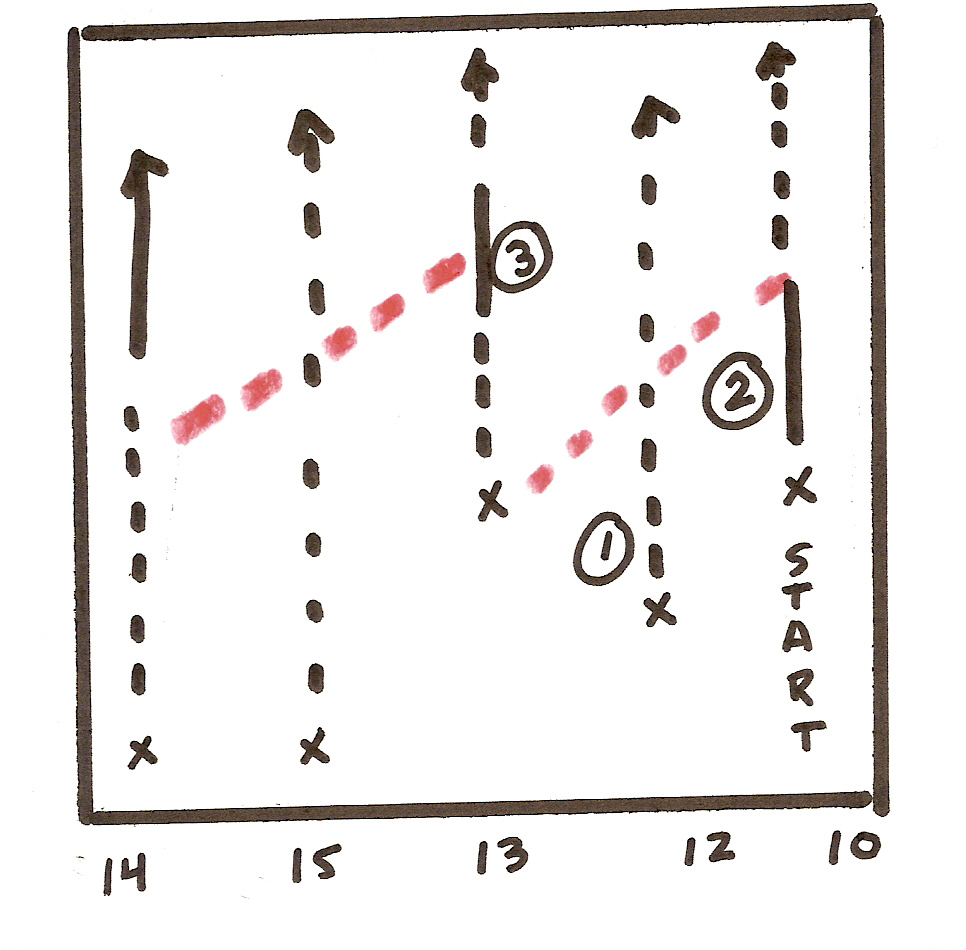
Here you will find the adapted version of rugby. For safety concerns , Touch Rugby will be used . Included in this unit will be rules, terminology , skills , drills and lead up activities.
Introduction
to Rugby
The objective of the game is to gain more points than the opposing team within the allotted time of play. A tie is called if the scores are equal at the end of play. A try is scored when a player places the ball in the opposition's goal area. It is counted as 5 points and can be converted to an additional 2 points with a successful place kick made from a line perpendicular to the point at which the ball was scored. A goal can also be scored through a penalty with a free kick or a drop kick from the field of play. A goal counts as 3 points.
Rugby is a game in which the prime objective is to ground the ball across the goal line to score a try. In order to do this, a team's players must have possession of the ball. Their opponent's objective is to prevent them from scoring a try. During the game, contests for possession occupy a large amount of time.
Once possession of the ball has been gained the team with it may use it to score a try in the following ways.
run with the ball towards the goal line avoiding defenders
pass the ball among team mates in a better position than themselves to assist in avoiding defenders
kick the ball towards the goal line, regain it and carry it over the goal line
kick the ball over the goal line and ground it .
The aim of these actions is to score points by:
a "try" - grounding the ball over the goal line - 5 points
a "conversion" - converting the try to a goal by kicking the ball over the goalposts - 2 points
a "field goal" - drop kicking the ball over the goalposts from the field of play - 3 points
a "penalty" - place kicking or drop kicking the ball over the goalposts when a penalty has been awarded following an infringement by the opposing team - 3 points .
Defending
The team that is without possession of the ball has the task of:
preventing the team in possession from moving the ball down the field
preventing the opposing team from scoring
regaining possession of the ball
This is achieved by:
touching/ripping the ball carrier
"snaffling" the loose ball away from the ball carrier
forcing the ball carrier over the touchline or forcing the ball carrier to kick the ball over the touchline
This gives the team the chance to regain the ball at the lineout that follows
"pressuring" the ball carrier and supporting team mates into errors and minor infringements that result in which the ball may be regained by "fielding" the ball kicked by opponents - to either catch it or pick it up if it is on the ground
.
Set Plays
Set plays are used to start and restart the game when stoppages occur. These are:
Kick-offs
Kick-offs are taken from the center of the halfway line:
to start the game and to restart play after half-time - a place kick
to restart play after a team has been scored - a drop kick
When the ball is kicked off it must travel beyond the 10 metre line unless it is first played by an opponent.
No player of the kicking team may be in front of the ball when the kick is being taken.
The ball must not be kicked over the touch line .
Dropouts
Dropouts are always drop kicks .
They are taken from behind the 22 metre line and the ball must reach the 22 metre line or pass beyond it after the attacking team has:
kicked the ball over the goal line where it is grounded by a defending player
kicked the ball over the dead ball line or into touch in goal
No player of the kicking team may be in front of the ball when the kick is being taken
Lineouts are formed to restart play after the ball has gone over the touch line or has been carried over it.
Penalty Kicks / Free Kicks
Penalty kicks and free kicks are taken to restart play when one team has infringed the Law.
Free kicks are taken to restart play after a "fair catch" has been claimed. A fair catch or "mark" occurs when the ball has been kicked by an opponent and it is caught within the 22 metre line, the catcher calling "mark".
Positioning
Attacking and defending players must place themselves in the correct positions on the field.
Position simply means players being where they are best able to perform their positional roles o there are two kinds of positioning:
static positioning - where to be before the action starts
dynamic positioning - where to go and what to do when the action starts
Rugby is a game that balances the contest for the ball with continuing play. As a result it is a game in which players of a variety of abilities assist each other to stop the opposition from scoring points, to get the ball back and to score points themselves.
The aim of an attack is to carry the ball down the field to score points or to create a points scoring opportunity.
To do this effectively ball carriers must at all times be supported by team mates ready to receive a pass or assist the ball carrier in some other way.
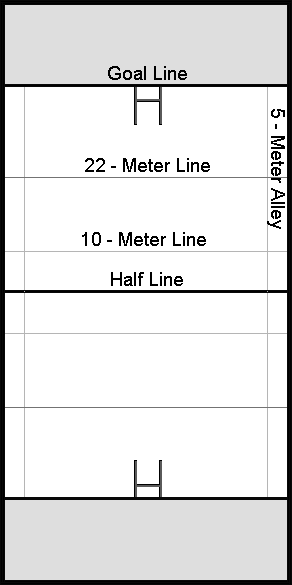 Rugby field
Rugby field
TERMINOLOGY

PLAYER NOTES
ROLL BALL
THE TOUCH/RIP
OFFSIDE
A player in the attacking team is offside when that player is
forward of the player who has possession or who last had possession. In general
play, offside attacking players who interfere with play should be penalized.
PENALTY
The mark for a penalty is normally at the
location of the infringement unless otherwise detailed in specific rules. For
infringements which occur on the boundaries, within five (5) metres of the
defending scoreline or outside the field of play, the location of a tap from a penalty
is to be five (5) metres infield (or on the five metre line) from where the
infringement occurred.
The
ball does not have to be lifted from the ground for the tap. However, the ball must
be at or behind the correct mark prior to the tap being taken.
A player may take the ball back behind the mark up to a maximum distance of ten
(10) metres behind the mark for a tap to allow room to execute a move. In such
cases the defending players must remain not closer than ten (10) metres .
BALL HANDLING SKILLS
KICKING/TEACHING POINTS
BALL HANDLING DRILLS
Name of drill: Ball Familiarization
Objective: to develop players ' awareness of the rugby ball by working on a wide range of ball handling skills.
The drill set up is to spread the players evenly around the field/floor with a ball in two hands.
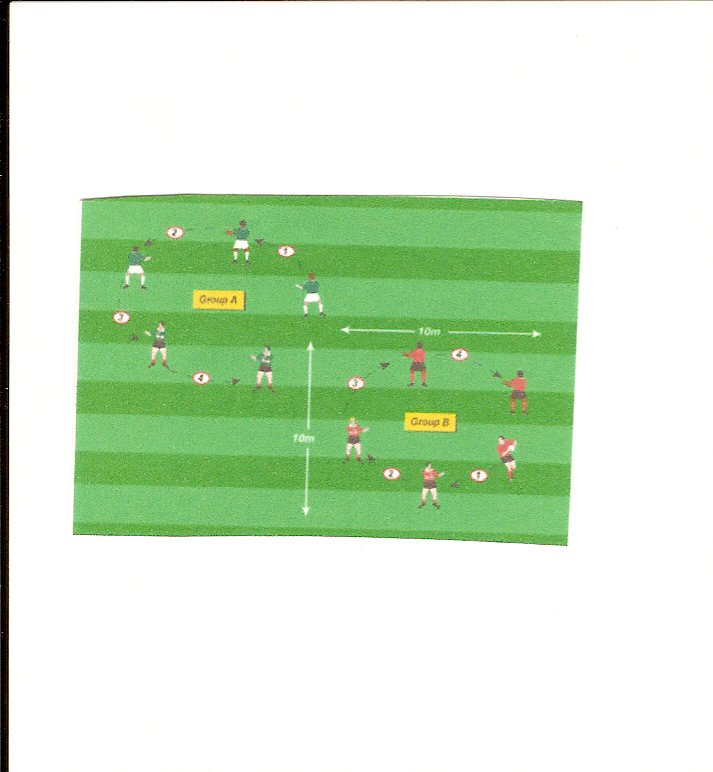

KICKING DRILLS
Name of the drill FORCE BACK
The objective is to improve accuracy of a variety of kicks and improve catching reactions
The players are scattered at appropriate distance on each side of the midline line. A player from one team kicks the ball over the midline toward the opposition.
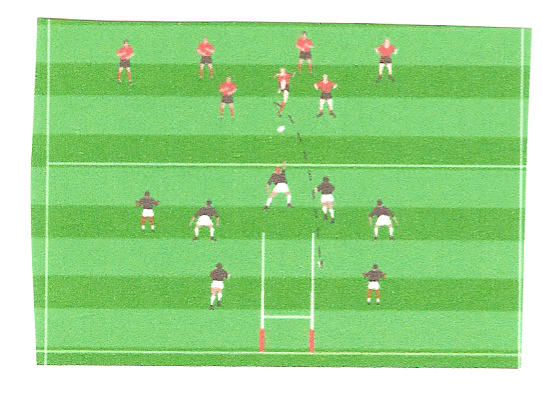
DEFENSIVE LINES
The objective is to practice spacing ( keeping lines straight) and communicating with teammates
Name of the drill:DEFENSIVE LINES
The set up is players opposite another group about 30 feet apart.
THE DRILL
Name of the drill: BALL /DEFENSE LINES
The objective is to get players in defensive pattern as quickly as possible for more players on the team to get into the defensive lines to use less space for the attacking team to attack.
The drill is set up with two balls on the ground about 10 yards apart.
THE DRILL
The objective is to practice kicking and catching skills(handling)
AROUND THE BASES- One team is the "batting" group while the other team is scattered in the field.Cones are set for bases in a square formation.The batting team kicks the ball(punt, chip, grubber,etc.) into the field and try to run as far around the bases as possible before the ball is returned to the cones.
 If the kick is caught , the player is out;if the ball is returned to a base before the player arrives, it is an out.Three outs and switch positions.Runs are scored the player makes it home.
If the kick is caught , the player is out;if the ball is returned to a base before the player arrives, it is an out.Three outs and switch positions.Runs are scored the player makes it home.
Players in the field should position themselves where they can be involved in a passing movement back to the base.
TOUCH AND PASS
The objective is to develop communication , movement into space and ball handling
The players are divided into two equal teams that are positioned inside a marked off cone area. The players on the team with the ball must touch the ball on the ground and then pass to a team member. The players on the opposite team have to intercept . Th eball carrier can't move with the ball. The other team must try to pressure the ball carriers into bad passes. If the ball is dropped or intercepted , the other team becomes the passers.The first team to complete (6-10) passes scores a point.Note: the ball carrier can't ass back to the person who just passed to them.Establish a 3 second time limit for passing.

ROB THE NEST
Make four teams and send a team to each of four cones/corners , which are aligned in a square formation on the half court/field area.One player runs from each team at a time. Place 5-6 balls inside a hula hoop in front of each team. The player takes one ball at a time. That player runs to another team steals the ball and then passes the ball to the next person in his line. The ball is placed inside their hula hoop and then repeat the process. The pass should be about 3- 5 feet from the next person in their line. The team with the most balls , wins.

PASSING DOZEN
Split into two teams. Start with a tap in the center of the game area.Players pass the ball among their team to score a touchdown(try) beyond an assigned area.They next attempt to score beyond a different designated area.

If the player holding the ball is touched it is a handover. The team gaining psossession of the ball is to score a try beyond the farthest try line from the change of possession.The ball may be passed in any direction. If the ball is dropped a handover occurs.The score is made between X1 and X4.The next attempt is a try between X3 and X6.
KEEPAWAY
The objective is to improve the passing and reaction skills.
Divide the players into small groups (4-5) of players scattered around the field/gym.Four players group together with one player as the interceptor. He will try to pressure the other players into making bad decisions or dropping the ball.If the ball is dropped or intercepted , the player who made the error and the interceptor trade places.

SHADOW RUN
Arrange the players in pairs with one ball for each pair of players.The player with the ball runs at speed while the other player tries to follow keeping about 1-3 feet away at all times.As a variation, upon signal, the ball carrier turns and passes to the other player who now becomes the runner. The objective is to practice quick and evasive movement .
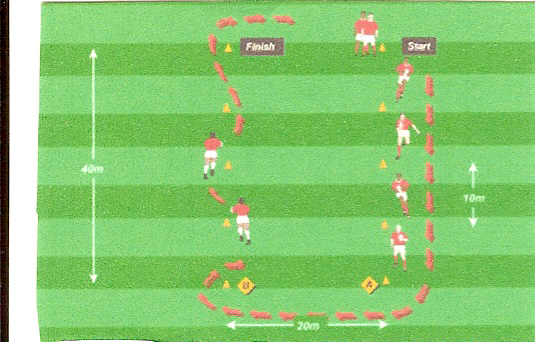
TOUCH RUGBY EXAMPLES

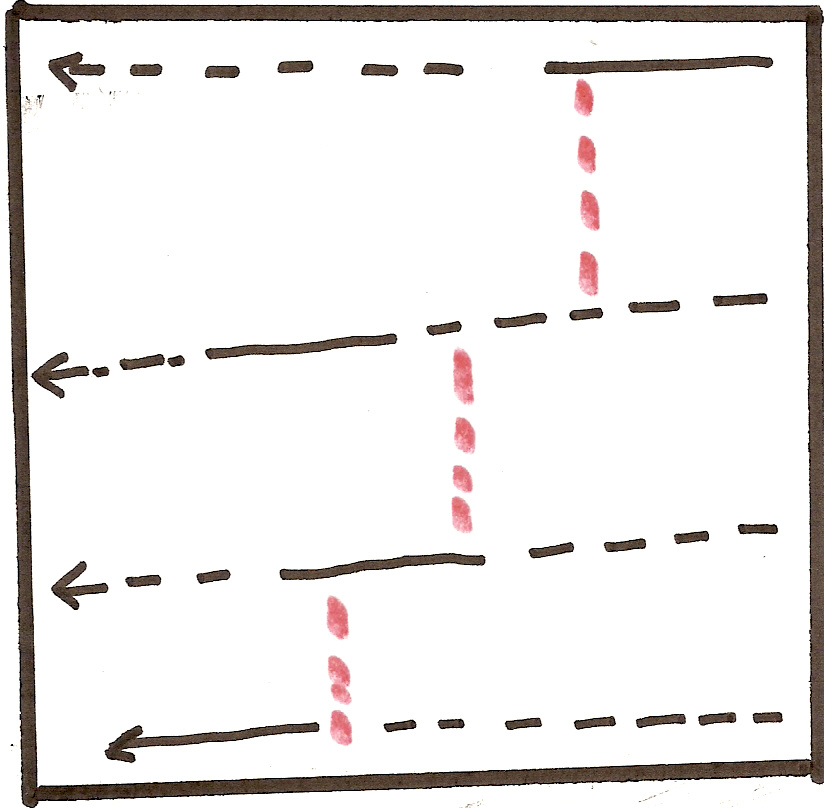 DOUBLE MISS
DOUBLE MISS